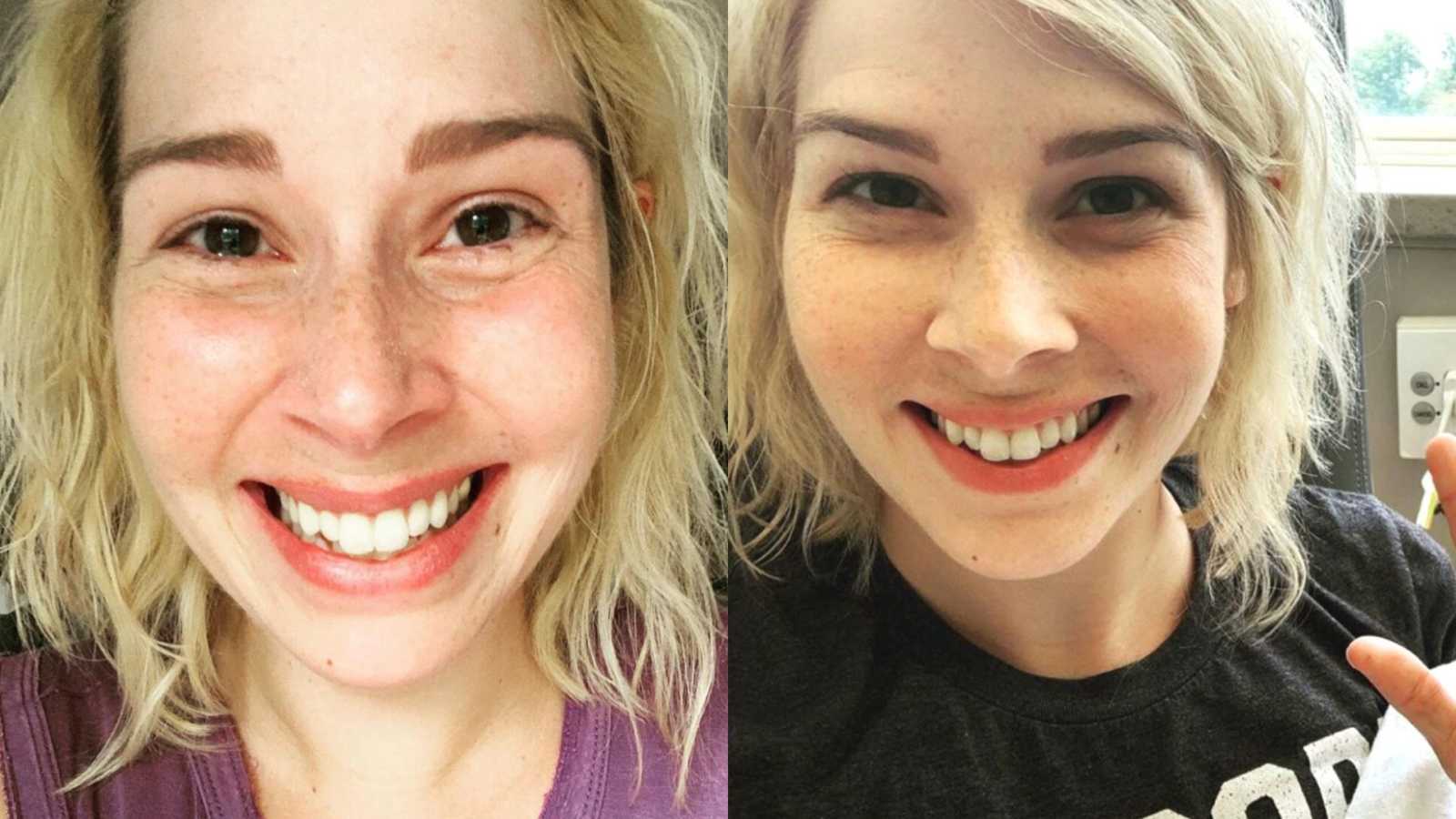“The story of my diagnosis does not begin like many others. There was no trip to the emergency room, worrisome lab work, or call from a doctor saying I needed to come in immediately.
My diagnosis began in a yoga studio.
It was early 2017, and the two-room studio where I practiced and taught was my home away from home. I taught two weekly classes in addition to my full-time job as a school teacher. What I loved most were arm balances: headstands, handstands, and poses with names like crow, firefly, and scorpion. I loved the challenge arm balances offered and I delighted in the moments when I landed a new pose for the first time.
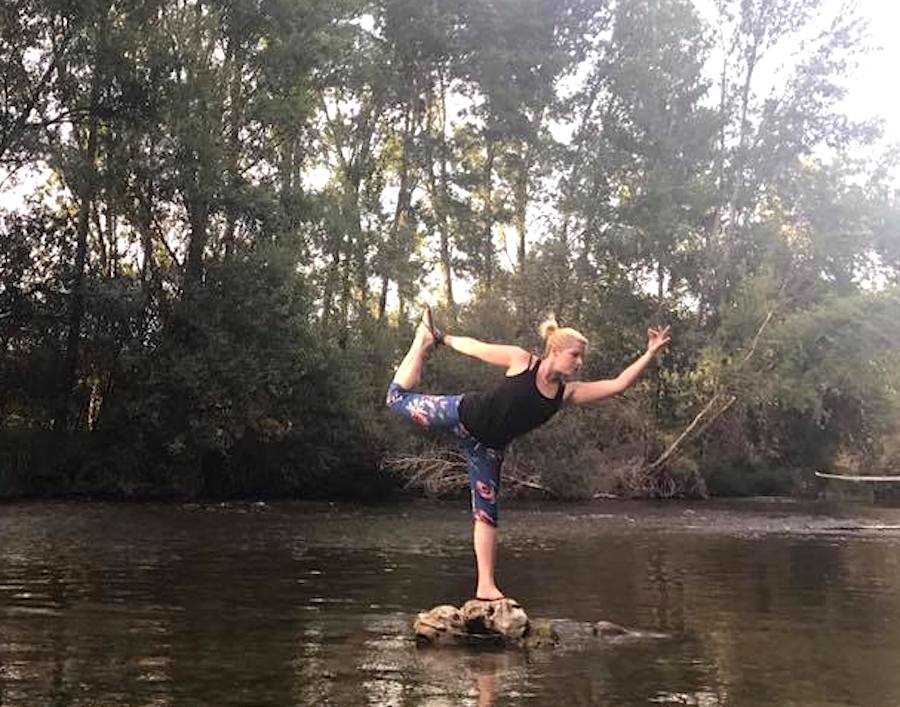
I noticed something was wrong when I couldn’t hold my balance easily and developed a tight pinching sensation and dull ache in my right shoulder. I blamed it on my form and fatigue and backed off for a few weeks, only to have the pain return when I started flipping upside down again. In May, I saw a physical therapist who also taught at the studio. She asked for details about my pain, studied my muscle movement, and told me it looked like shoulder impingement. After reviewing a few strengthening exercises, I thanked her and went on my way. The pain ebbed and flowed in the coming weeks, but I continued the exercises she gave me. By early June, a coworker stopped me in the hallway. ‘Hey, you look a little swollen by your collarbone,’ she said. ‘Might not hurt to get it checked out!’
Jokingly, I groaned. I had a huge trip planned: I was leaving in just under a month to hike the Camino de Santiago, a 500-mile pilgrimage across Spain. But I knew deep down I wouldn’t be able to enjoy my time abroad without peace of mind. I had a chest x-ray and an ultrasound to diagnose the problem. The day of my scan, I looked at the technician nervously. ‘Well?’ I asked, after telling about her my upcoming plans. ‘Anything I should be worried about?’ She smiled. ‘I’m not supposed to say, but you’re all good to go on your trip. Have a wonderful time!’ The official report came back a short time later: it was a lipoma, a benign fatty mass just under the surface of the skin. I could have it removed sometime in the fall. On my flight to France, I sighed in relief, happy to have those scans behind me so I could begin my adventure.
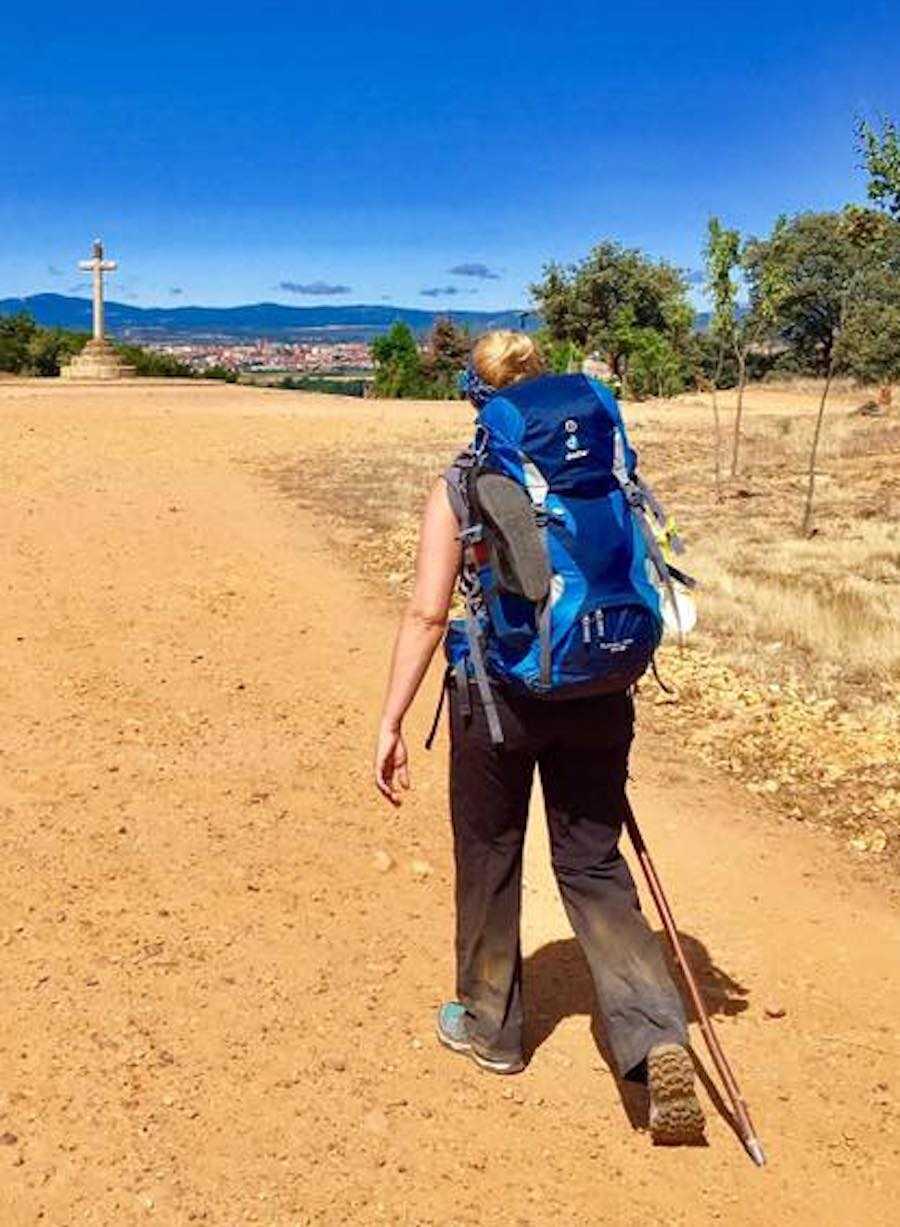
That July, I walked from Saint-Jean-Pied-de-Port, France, to Santiago de Compostela, Spain, in 34 days. It was the most demanding physical challenge I’d ever undertaken. On my first day of hiking, I crossed the Pyrenees Mountains: 16 miles with an elevation change of 1,200 meters in about ten hours, also in 80-degree temperatures and direct sunlight. Despite this immense challenge, and those which followed, I walked on, in spite of aching feet, a tired body, and an occasionally homesick heart. I will never forget the feeling of walking into Santiago’s city center on the final day and seeing the cathedral for the first time. Turning to my friend who I walked with, there were tears in my eyes. I thanked her for being there with me. ‘I am so grateful.’

The joy I felt walking into Santiago did not last. That September, I had surgery to remove the lipoma I thought was causing my pain. As I came out from anesthesia, my mom asked the doctor how it went. ‘Well, confusing,’ he replied. He explained they didn’t find any evidence of a lipoma. ‘I conducted an exploratory surgery, but the cause of your swelling and pain remains a mystery.’ I was stunned. How could it be? The following weeks brought no answers. The swelling in my chest grew, and my pain skyrocketed. I bounced from doctor to doctor and ended up in a thoracic surgeon’s office on January 31, 2018, a year since I first started falling out of my handstands.
On the last normal afternoon, I waited for close to two hours before the thoracic surgeon walked into the room. After introducing himself, he explained his delay. ‘The reason I was taking so long is because I wanted to have people I trust look at your scans. This doesn’t look like a lipoma. This is suspicious for a sarcoma.’ He continued talking and I had to interrupt, unable to believe what I’d heard. ‘I’m sorry, you said sarcoma? Do you mean I have cancer?’ I stammered in disbelief. ‘It’s a very likely possibility,’ he replied. In that instant, my world turned upside down, and no matter how hard I tried, I was unable to turn it upright.
I walked through the next few days like a shell of my former self. After texting both my boss and a close group of my friends the news, I relied on my parents to communicate the situation to everyone else. I asked people not to call me or text me unless I reached out first, knowing discussing it would lead to a flood of emotions I was desperately trying to seal up behind a wall. I went to the University of Pennsylvania Hospital for a biopsy and waited for the results. I’ll never forget going to the movies to see ‘The Greatest Showman’ with my mom a few days into the wait. As I watched the previews flash across the screen, I wondered if I’d be alive by opening day. I tried to keep focused at work, but it was clear to everyone who I encountered that something was wrong. I ripped off the band-aid by telling as many people as I could in a staff meeting. While there was a flood of support and kindness, there were a few people who found the news impossible to accept. Comments such as, ‘Maybe they’re wrong, Try to stay calm,’ or ‘The doctors always say things like that, it’s probably not true,’ invalidated the grief I was drowning in. It was the worst two weeks of my life.
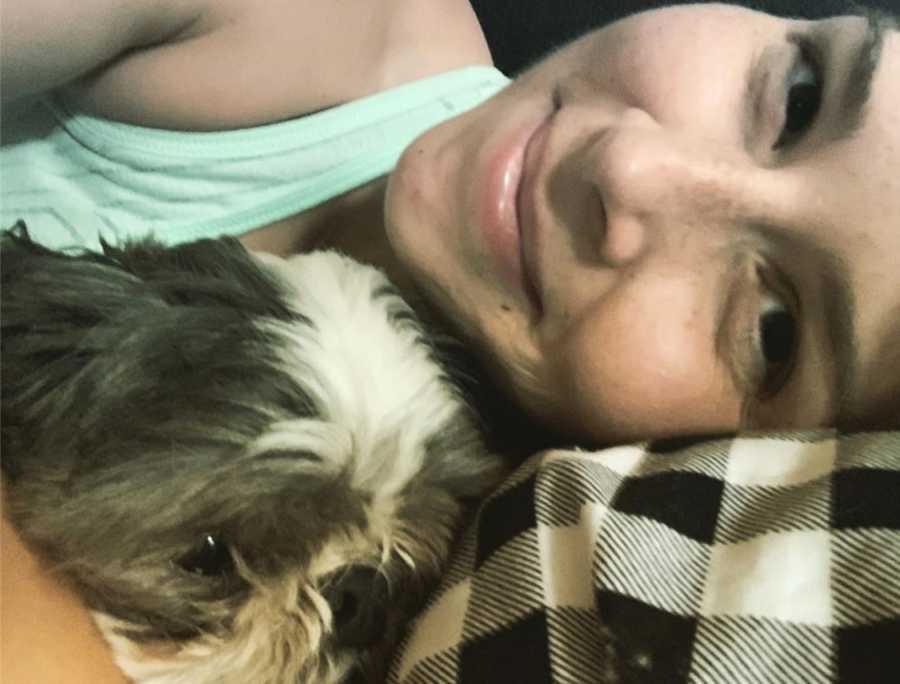
On a clear, cold Thursday, I finally got the call. It was a soft tissue sarcoma: desmoid-type fibromatosis, commonly referred to as a desmoid tumor. Desmoids are the rarest of the rare: approximately 2 in a million, in fact. While my tumor would likely not metastasize in a traditional sense, it was locally invasive and incredibly aggressive. I was presented first with the option of surgery. The procedure would take many hours and require the removal of my clavicle, top three ribs, part of my sternum, and my pectoralis major and minor – in addition to moving my latissimus muscle to the front of my chest and completing a breast reconstruction. Since it’s nearly impossible to get positive margins on desmoid tumors, there was still a strong chance it would grow back. I managed to hold back tears until the doctor mentioned, ‘The surgery could potentially impact a nerve connected to your voice box.’ A singer since childhood, the thought of never singing again was too much to tolerate. As the doctor explained this, images of the life I loved, full of handstands with my students, downward dogs on my yoga mat, and time on stage at a community theater flashed before my eyes. A few hours later, I met with an oncologist who presented me with another option: oral chemotherapy. Tears of relief rolled down my cheeks, and I leapt on the chance to start the drug.
The joy over the option of starting chemo faded quickly. Almost immediately, I was drained of all of my energy and appetite. I was constantly nauseous, at one point ending up in the emergency room, unable to keep down liquids. There were days where I could not get out of bed, and I relied on my parents and siblings for help with the most basic tasks: walking my dog, making me toast, and cleaning my apartment. I could not have managed those months without them.
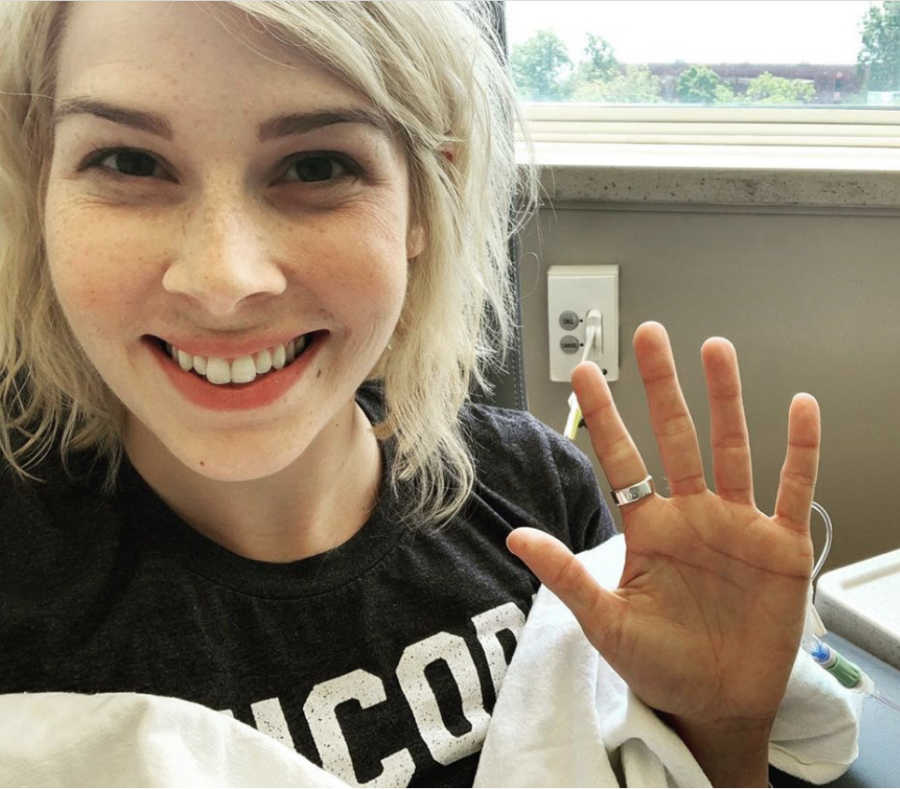
After nine months, I had an MRI which showed my tumor was not responding to treatment. I was devastated, having put so much hope into the success of this drug. I was prescribed another oral chemo, only to have my pain skyrocket. My oncologist agreed it was time to try IV chemo. Since the drug I was starting, Doxil, would suppress my immune system, I would have to go out on disability. The day I told my students I was leaving was one of the hardest I’ve ever experienced. I could see the fear in their eyes. I put on my best, bravest smile and assured them I would be back soon. On my birthday in May, they gifted me with a fleece blanket with a fringe of knots around the edge, each lovingly tied by one of my students. It’s one of my most treasured possessions and feels like a hug from each of them.
It’s now January of 2020. Doxil had successfully stopped the tumor’s growth and even shrunk it slightly. I have two more infusions to go, and then we’ll decide what treatment to try next. As hopeful and exciting as the news is, life is still incredibly challenging. I often feel like I’m stuck in time, only able to see ahead to the next scan, while many of my friends have gotten married, bought homes, or started families. I still struggle to accept while some patients receive treatment and now live tumor-free, my oncologist considers my diagnosis a chronic one. Until there’s a cure, I will probably be in some form of treatment for the rest of my life. For this reason, I’ve become an unlikely rare disease advocate. I started an instagram account to connect with other patients and blogged about my experience living with a rare disease. In two years, I’ve raised over $32,000 for the Desmoid Tumor Research Foundation. I have found so much meaning and support in the rare disease and the AYA cancer community, and I hope by giving back, my struggles can become guidance for someone else.
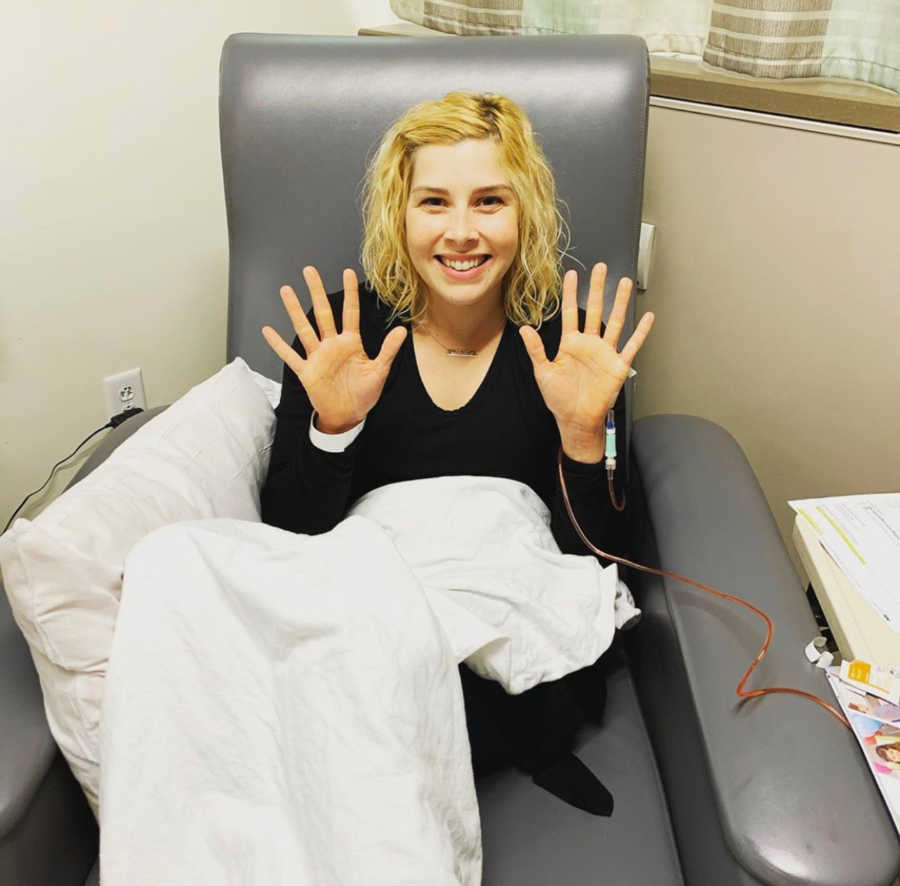
In many ways, I feel far from the 28-year-old who walked across Spain, but I know that trip forged within me a determination which has never quite gone away. The same persistence that kept me walking through the heat of the Pyrenees and the barren flat plains of Northern Spain has kept me walking after nearly two full years of chemo. Some days I feel transcendent and other days I’m convinced I can go no further. And yet, here I am, walking on: I’m unsure of my destination, but determined to keep going.”
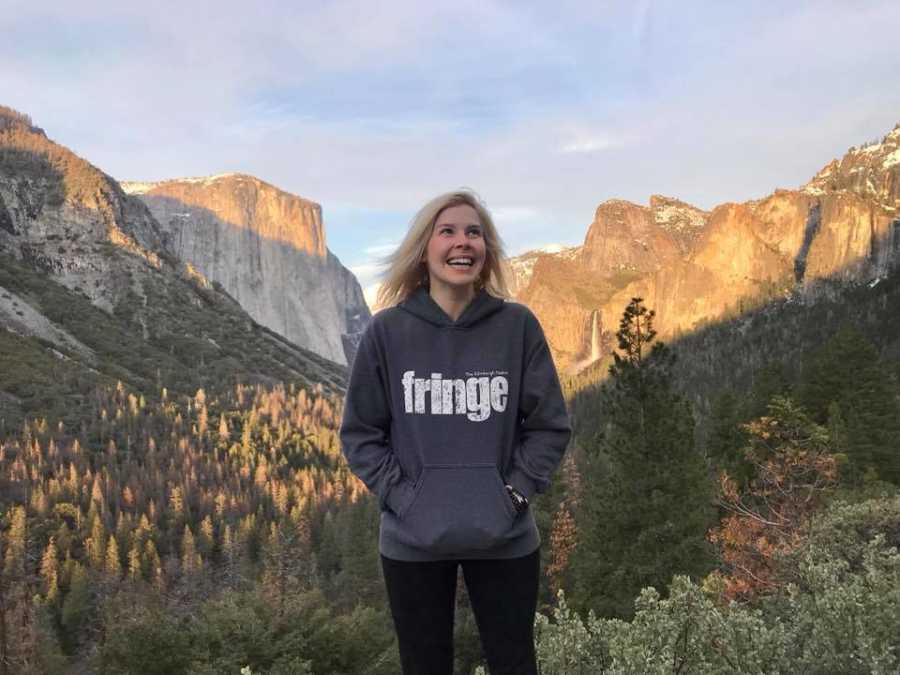
From podcasts to video shows, parenting resources to happy tears – join the Love What Matters community and subscribe on YouTube.
This story was submitted to Love What Matters by Christina Kosyala. Follow her on Instagram and her blog. Submit your own story here, and be sure to subscribe to our free email newsletter for our best stories.
Read more inspiring stories of battling cancer here:
Please SHARE this story on Facebook and Instagram to encourage others to cherish every moment and love what matters most.

